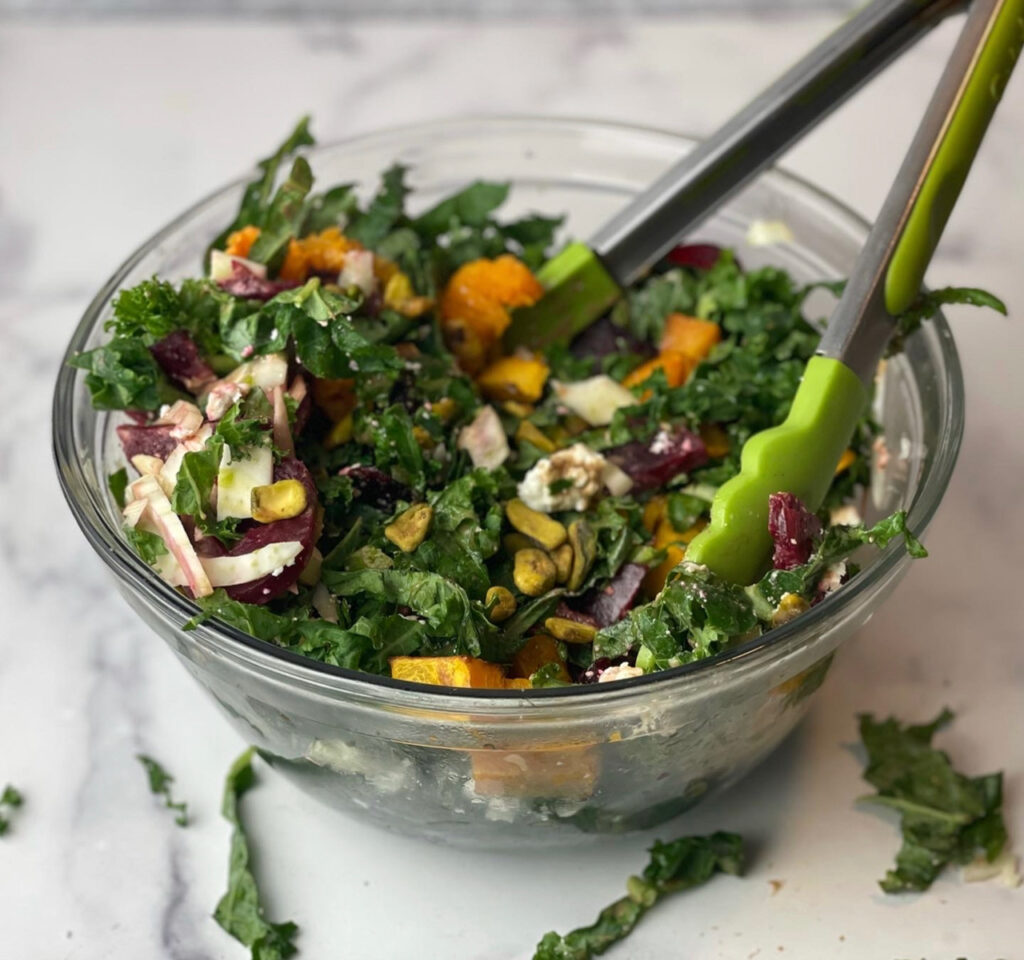
I used to think salads were for sides, or garnishes to your meal. But that was back in my 20’s. Over the years, I’ve discovered so many ways to make that bowl of greens shine with flavor, texture, and color! And create a well-balanced, nourishing meal.
- Keep ’em Fresh and Go for Variety
To keep your greens crisp, be sure to use them right away, as salad greens tend to wilt quickly unless they are heartier like kale or chard. Rinsing your greens is always recommended, but be sure to fully spin to dry — it will allow your dressing to better adhere (and not end up at the bottom of your bowl). Variety is key to texture and flavor. Using two types of greens can help in two ways: 1) If you’ve got a bunch of greens that needs a little lift (perhaps it’s starting to wilt), adding in a fresh crisp other will help to refresh it! 2) Mixing two types such as spinach and arugula can bump up the textures. That would be a perfect way to add a peppery lift (without the burn) to an already tasty Avocado, Chickpea, & Quinoa Salad. (Heck, why not go with two different types of kale (elephant and curly)! - Build the rainbow.
No we are not talking about piling on dried pineapple, chewy dried mango chunks, nor those sweetened, crunchy banana chips. Look to your colorful veggies and fruits like sweet potato, blueberries, cucumbers, beets, broccoli… you get it (all great for your heart AND brain health)! These vibrant fruits and veggies not only add fiber and essential nutrients; but also antioxidants that keep your gut healthy, your skin glowing, and your mind sharp. - Go nuts (but don’t go crazy).
Adding a sprinkling of nuts can go along way in terms of flavor, healthy fats, and crunch! Consider walnuts (a source of omega 3’s), almonds (a neutral GERD-supportive food), pistachios (a good source of plant protein), pumpkin seeds, cashews. - Pack in some protein.
Great options include chopped chicken chunks (salad is a perfect vehicle for leftovers), hard boiled eggs, firm tofu, edamame. Go with just one, or a combo of two. And you may even lightly season it before adding to your salad. I love using blends like Zaatar or Furikake (both can be suitable to GERD – but be sure to check the labels as they aren’t all formulated the same). - Consider complex carbs.
Try quinoa, brown rice, wild rice, or beans/legumes. I love using French lentils! Again your salad is a great vehicle for repurposing leftovers (i.e., rice from the previous night’s meal.) - Go light on the dressing.
Drizzle just enough dressing (try my popular GERD-friendly Almond Dressing to distribute throughout, while letting the natural flavors of your fruits, vegetables, and other plant foods shine through. (Go light on the cheese, if using — feta has so much flavor, you can get great results with not much more than a rounded tablespoon of crumbles). Note: If you dairy is an issue, consider adding a few slices of creamy avocado (it’s a great source of fiber and healthy fats).
If you like these tips and would like to learn more on creating vibrant heart-healthy salads or grains bowls, please reply in the comments below.

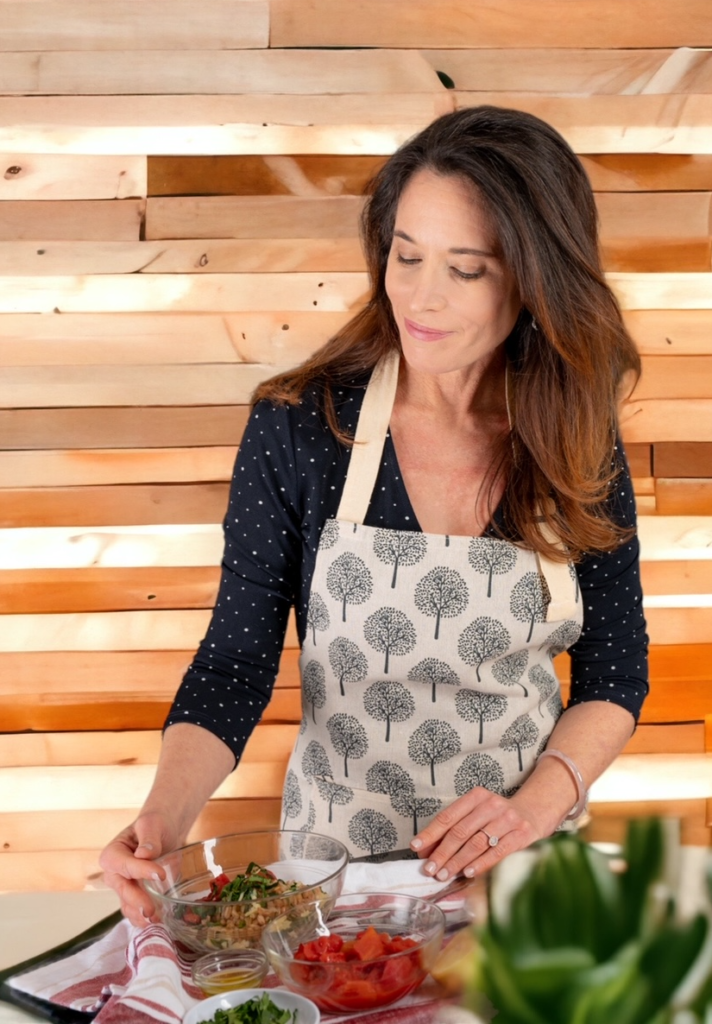
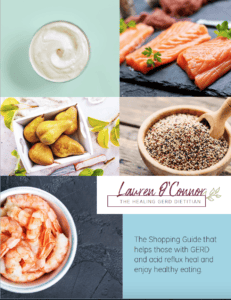
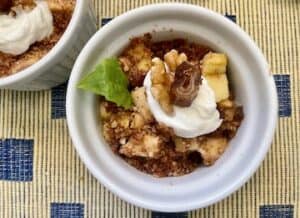

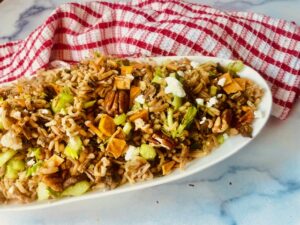
4 Responses
Thank you so very much for your website
My son in law is taking so many medicines for his Gerd
He always says they tell you what you should not eat but never say what would be good to eat for Gerd
Now that I sent this to him it will help a lot
Thank you again
I hope you are on the road to recovery also
Eileen ( a happy mother in law now)
I know. The focus should be on all the wonderful, tasty foods you CAN add to your diet. I have been well for quite sometime now, but my severe GERD I once had helps me relate to my patients, which is def a silver lining. Glad you found this helpful and hopefully so will your son in law.
So do you not have GERD any more? I have seen differing opinions online as to whether or not you can actually cure it. I have had gastritis and GERD for some time now, and would love to heal, but it seems that the opinion that both conditions are lifelong are more common than those with a healing/cured mindset.
It’s true that I don’t have severe GERD symptoms anymore. But I don’t recall saying I didn’t have GERD anymore. I manage it very well these days and for quite sometime. Amanda, I agree – it is generally lifelong unless you have a successful surgery to correct the underlying issue. If you don’t like my logo tagline “healing GERD dietitian” – I get it — It does kinda imply a “cure it” mentality. If you have any suggestions for a new tagline — I’m open to your suggestions.